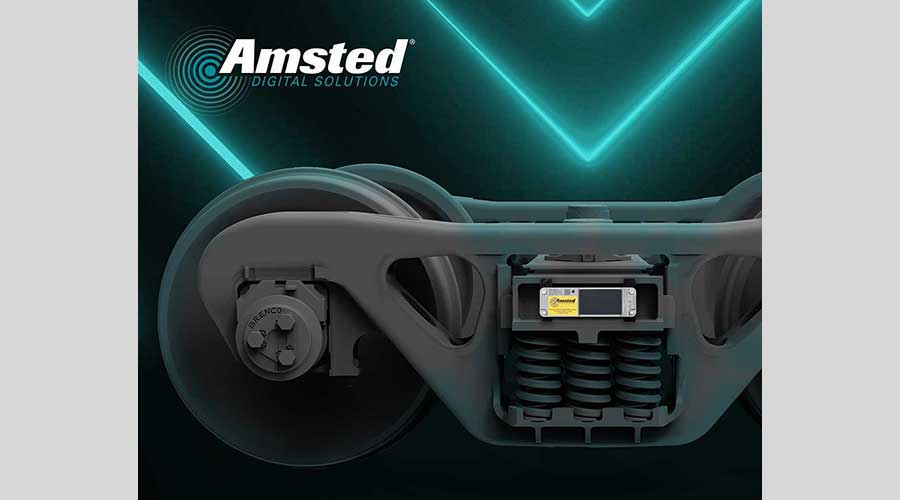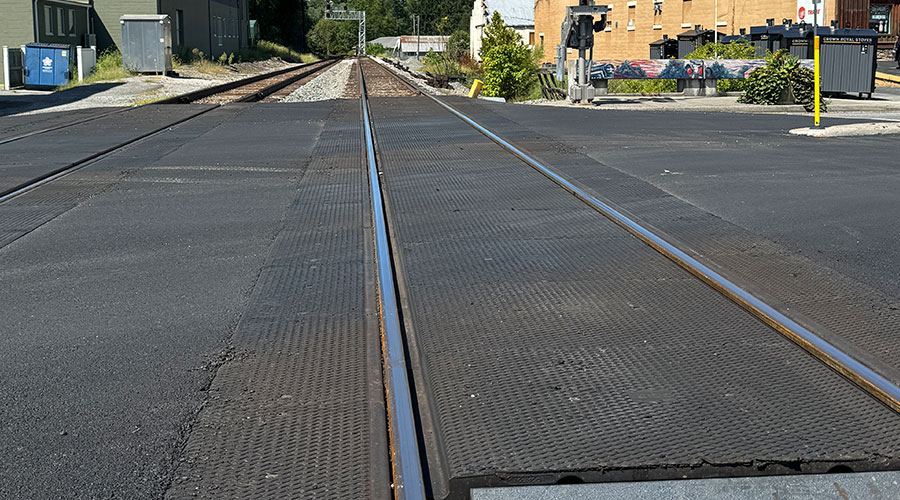Stay updated on news, articles and information for the rail industry
April 2020
Rail News: MOW
Technology update: Monitoring
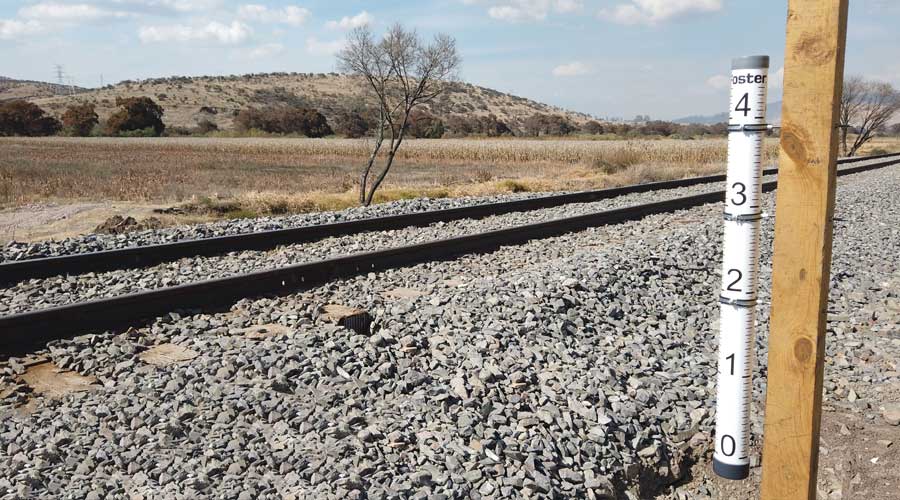
Compiled by Pat Foran, Editor
Railroads turn to technology for an array of monitoring and detection applications — from identifying track defects and improving safety to optimizing maintenance practices. What’s new on the monitoring technology front? For an update, we recently reached out to a cross-section of suppliers. Emailed responses from six companies follow.
L.B. Foster Co.
L.B. Foster Co.’s Flood Monitoring System is designed to monitor water levels in flood-prone areas.
The technology can identify water levels “down to the inch,” L.B. Foster officials said. A wireless pole enables users to set alarms at various depths; alarms are activated at customer predetermined levels. When floodwater reaches the alarm level, nearby solar-powered cameras are triggered to zoom in for a live view of the area that generated the alarm, initiating a customer emergency response. The live feed is delivered immediately to the customer via a web portal showing live flood depths.
The system also will issue a notification when the water has receded, providing trains safe passage through the once-flooded area. Systems currently are installed along Class I lines where simulated flood tests show “impressive results,” alerting those customers within two minutes from the start of water testing to the alarm being delivered digitally, company officials said.
“Many flood detecting devices in place use a float mechanism, live in water, and because they are prone to sediment buildup, require ample maintenance,” L.B. Foster officials said. “[Our flood monitoring technology] combines advanced internal know-how and sophisticated external sensing, ensuring system longevity and cost-effective maintenance over time.”
Railway Equipment Co.
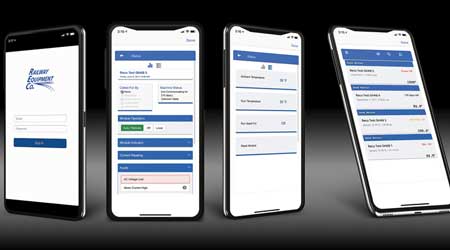
Railway Equipment Co. (RECo) recently celebrated its 40th anniversary providing products and services to freight and passenger railroads.
“Over the last 15 years, RECo has offered remote connectivity with our switch heater product line, complete with real-time alerts that enable users to take action remotely,” said Joe Ashley, vice president and general manager. “This has increased switch heater uptime and decreased exposure of railroad personnel to dangerous driving conditions. Users have also measured and reported on the increase in switch reliability during harsh winter events. The product has been adopted across transit and freight railroads.”
RECo also is adding the remote connectivity capability to its current product lines and introducing new products that leverage the technology.
“One of the many benefits of RECo’s switch mode charger is the ability to remotely shut the charger off and collect the voltage readings of each battery to ensure the backup power source is operating as intended,” Ashley said.
The company also is incorporating remote monitoring into its grade crossing products. RECo developed a suite of products that can continuously monitor crossings for exceptions, including gate lamps not flashing, gate arms not in the correct position, flashers not flashing or out of alignment, and audible crossing bells not functioning. The information is fed into a central data collection device in the bungalow, where it’s sent to railroad maintenance personnel.
SENSR
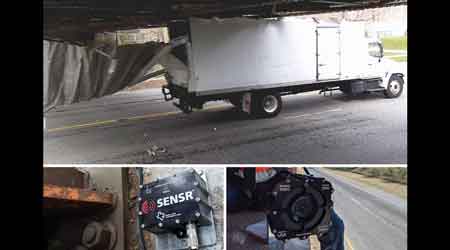
SENSR produces a bridge strike detection system for railroad and highway bridges. The system uses a purpose-built camera along with inclinometer and acceleration measurements to detect impacts to bridges, and notify bridge owners within minutes. The system has been deployed on rail bridges owned by Class Is as well as transit agencies, SENSR officials said.
Strikes to bridge superstructures from over-height trucks are common both in dense urban areas and remote, rural locations. So are strikes to bridge piers on navigable waterways. Most strikes result in minimal damage, company officials said.
“Railroads can use the strike detection system to screen for these superficial strikes and reduce operational delays,” they said. “They also use the system to identify damaging strikes or to recoup costs from operators using the tilt, acceleration and video footage.”
The SIM1 camera captures high-definition footage before, during and after a strike, and the video is included in text and email alerts. The SR1 combination tilt and vibration sensor measures bridge responses and “ensures that there is no permanent deformation to bridge elements,” SENSR officials said.
It’s managed with a cloud-based data collection system called SENSRsi, which incorporates patent-pending machine learning tools designed to enable the software to automatically identify bridge strikes within seconds. The solar-powered system uses cellular data to communicate, so it can be installed in places without existing power or communications infrastructure.
Wayside Inspection Devices Inc.
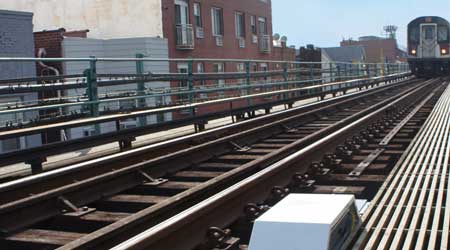
Wayside Inspection Devices Inc. offers the TBOGI wayside monitoring system, which is used by freight and passenger railroads around the world, company officials said. The laser-based vision system enables railroads to know when and why the wheel-rail interface is compromised. The aim: prevent accelerated wear at the source.
Railroads use TBOGI to reduce wheel wear and rail wear, and they’ve done so by 20 percent to 55 percent, company officials said. They also have reduced rolling resistance by about 3 percent. The TBOGI system measures key parameters to evaluate the wheel-rail-interface, namely the wheelset angle of attack and tracking position. The system combines these parameters into specific truck geometry defects and lateral dynamic stability measurements of each truck (hunting).
“TBOGI measurements are immune to changes in weather, train configuration and rail lubrication conditions,” company officials said.
TBOGI is now available in a package optimized for transit and metro railway environments: the TBOGI-TR. The system can be deployed in tunnels, elevated guideways or multiple-track mainlines with “minimal civil work,” company officials said.
Siemens
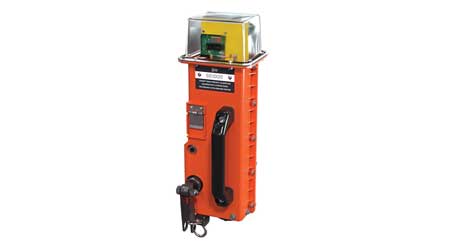
Siemens offers a suite of monitoring and detection products that work independently with new and existing equipment — such as Siemens GCP 3000+, Trainguard EOT and GCP 5000. When combined, the products can provide customers “with the most advanced diagnostics, troubleshooting, automation and insight possible about their field equipment, its operation and maintenance,” Siemens officials said.
The company’s Wayside Inspector enables automatic remote testing of warning equipment against key regulatory requirements. It offers such capabilities as an advanced event recorder, customizable alarming, and notification logic and reporting of inspection status.
The ATOM edge computing gateway provides connectivity and processing power. It interfaces to collect data and video; monitor, configure and update equipment; automate workflows; and connect the field securely with the office using built-in and/or custom applications for both legacy and modern wayside systems.
Siemens RailFusion platform provides hosted, cloud and on-premise solutions for interacting with field equipment, aggregating video and data from Siemens and third parties, and warehousing alarms, events and logs. It normalizes protocols across products and systems, and connects customers with information through reports, desktop and mobile applications, real-time notifications and custom solutions.
Soon, the company’s End-of-Train Phone Home service will be integrated with RailFusion, providing customers (of Siemens brand, or other end-of-train devices) with insight into the location, status, health and configuration of their devices, while allowing control over settings and the ability to remotely update software, Siemens officials said.
ENSCO Rail
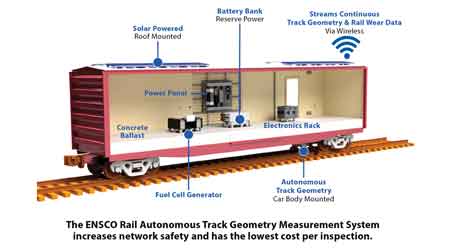
A fully autonomous track geometry measurement system installed on locomotives, passenger trains or freight cars, the ENSCO Rail Autonomous Track Geometry Measurement System (ATGMS) operates uninterrupted more frequently than manned systems and without an operator onboard,
ENSCO Rail officials said. ATGMS offers:
• increased inspection frequency — every train movement presents an opportunity to assess the track and detect defects sooner;
• reduced operational costs (crew and travel costs are not required);
• higher inspection speeds than traditional inspection cars; and
• unimpacted railway traffic flow for data collection.
When combined with ENSCO data analytics, customers can detect defects sooner, identify the highest risk areas of a track network, and optimize maintenance and renewal planning, company officials said.
Email comments or questions to pat.foran@tradepress.com.


 LRW Honors Amtrak’s Acheson As Railway Woman Of The Year
LRW Honors Amtrak’s Acheson As Railway Woman Of The Year
 From Editor-In-Chief Foran: Of Gender Equity And Inclusion
From Editor-In-Chief Foran: Of Gender Equity And Inclusion
 Spotlight On Some Of Today’s Rail Safety Products
Spotlight On Some Of Today’s Rail Safety Products
 Women of Influence in Rail eBook
Women of Influence in Rail eBook
 railPrime
railPrime




